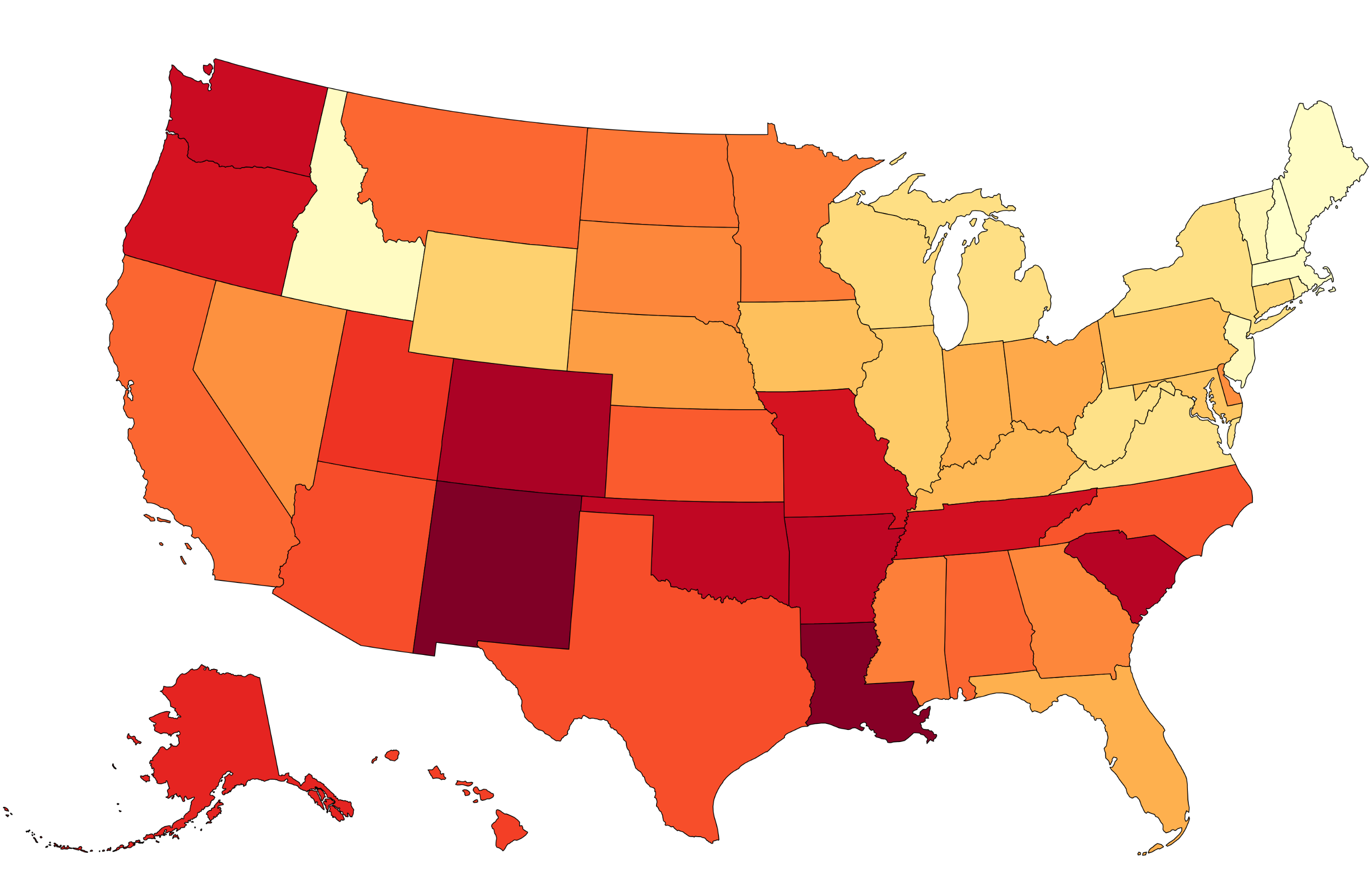Grasping crime rates across the U.S. has never been more important for lawmakers, police, and citizens alike. A recent map sheds light on how social and economic factors contribute to safety nationwide.
A report from Pew Research Center in February revealed that 58% of American adults believe tackling crime should be a top priority for both the president and Congress. This sentiment is particularly strong among Republicans, with roughly 70% backing this view, compared to about 50% of Democrats. Notably, this represents an increase from 47% since President Biden took office in 2021.
Crime rates often become focal points during elections, with candidates showcasing their “tough on crime” stances to resonate with voters.
Interestingly, while crime rates have generally decreased across the country since the 1990s, there are significant disparities between states.
New Mexico has the highest reported crime rate in the nation at 6,462 incidents per 100,000 residents, which is more than double the rates of the bottom 11 states. This trend correlates with the state’s challenges in areas like education and income, both historically linked to higher crime.
According to U.S. News & World Report, New Mexico ranks last in educational quality and is one of the poorest states, with about 18% of its population living below the poverty line.
In July, Governor Michelle Lujan Grisham called for urgent legislative measures to tackle crime, proposing an 11-bill initiative focusing on mental health, crime reporting, and gun violence. Unfortunately, none of these bills passed during a special session on July 18.

Louisiana follows closely behind New Mexico, reporting a crime rate of 6,408 per 100,000 residents. The state has the third-highest homicide rate in the U.S., trailing only Mississippi and Washington D.C.
In contrast, larger states like California and Texas, as well as densely populated New Jersey and Rhode Island, boast relatively low crime rates. California ranks 19th, while Texas comes in 15th. Surprisingly, New Jersey, despite being the most densely populated state, has the fifth lowest crime rate at 2,512—contradicting the FBI’s assertion that population density contributes to higher crime.
At the other end of the spectrum, New Hampshire holds the title for the lowest crime rate in the country. Its success is attributed to robust socio-economic conditions and strong educational outcomes. U.S. News & World Report ranked New Hampshire as the seventh richest state, with a median household income of $89,992 and ninth in educational quality.
